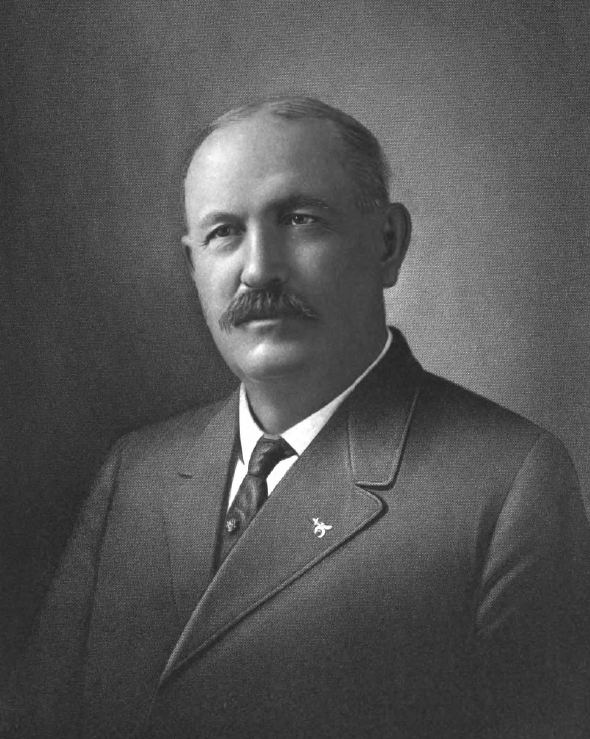Nominated by William Howard Taft Nationality American Preceded by John H. Page Name George Young | Preceded by Lloyd B. Christy Died November 26, 1926 Succeeded by Peter Corpstein | |
 | ||
Succeeded by Sidney P. Osborn (as the Secretary of State of Arizona) Born February 10, 1867
Hamburg, Clark County, Indiana ( 1867-02-10 ) Political party Republican Party, Progressive Party | ||
George Ulysses Young (February 10, 1867 – November 26, 1926) was an American businessman and politician. Active initially in railroads, he transitioned his business interests to mining. Politically he served as Secretary of Arizona Territory and as Mayor of Phoenix.

Biography
Born to John Alexander and Elizabeth (Wilson) Young on February 10, 1867 in Hamburg, Clark County, Indiana. While he attended public schools, he was primarily self-taught. By age 12 he was literate in both Greek and Latin. His mother died when Young was a boy and his father moved the family to Kansas in 1879. He began working at age 14, taking a job as a farm hand. A year later he was teaching at a local school. Young also began a study of law. After being admitted to the Kansas bar when he was 21, he began a successful legal practice, winning eighteen cases. Young left his legal practice in 1890 and moved to Phoenix, Arizona Territory.
In Arizona, Young became a bookkeeper for a company building a railroad line between Ashfork and Phoenix. He then worked his way up to fireman and engineer with the Atlantic & Pacific Railroad. Young was then elected principal for the schools in Williams. He remained there for four years. During this time be became the owner and publisher of the Williams News. In another business venture, Young joined with Buckey O'Neill and became an organizer and promoter for the Grand Canyon Railway. Following O'Neill's death, Young became the primary force behind the railroad's completion. The effort was financially unsuccessful and Young lost over $75,000 in the venture. Young joined an American Railway Union strike in 1904 and never returned to work for the railroads.
Young married Ellen M. Smith of Williams on September 26, 1900. The union produced two daughters and a son. Fraternally, Young was a 32nd degree Mason. He was also a member of the Benevolent and Protective Order of Elks, Knights of Pythias, and the Nobles of the Mystic Shrine.
Around 1903, Young became interested in mining. He became President and general manager of the Madizelle Mining Company and Young Mines Company, Ltd. His mining operations were located at Goldfield (later renamed Youngsberg) and in Yavapai County west of Prescott.
Politically, Young was secretary of the Republican territorial committee in 1908. On April 8, 1909, President William Howard Taft nominated him to become territorial secretary. Young took his oath of office on May 1 and he held the office until Arizona achieved statehood on February 14, 1912. While in office, Young's primary concern was dealing with Arizona's 1910 constitutional convention. To aid in the efforts, Phoenix's first post office substation was opened adjacent to Young's office on January 2, 1911. The substation dealt almost exclusively with mail related to Arizona's proposed constitution.
On several occasions, Young served as Acting Governor. In July 1911, he granted clemency to several prisoners. This action angered Governor Richard Elihu Sloan, who was vacationing in California at the time. Sloan commented on the issue, saying "This is one reason why I spend so much time at home, I am almost afraid to get out of the territory for this sort of things has happened before." During his final months in office, Young oversaw the sale of office furniture belonging to the federal government.
With statehood coming, Young was a Republican candidate for Governor in 1911, but lost in the primary to Edmund W. Wells. He was elected Mayor of Phoenix and sworn in on April 7, 1914. The same year he was the Progressive party candidate for Governor. He did fairly well for a third party candidate, garnering over 10% of the vote, but lost to incumbent Democrat George W. P. Hunt and Republican nominee Ralph Cameron/ Young ran for reelection as Mayor in 1916 but was defeated. He made another unsuccessful run for Mayor in 1920. During the 1924 United States Presidential Election, Young was a Robert M. La Follette supporter.
Young experienced a severe decline in his health in late 1925 which rendered him an invalid. He died from apparent apoplexy on November 26, 1926, at his vacation home near the Derby Mine. He was cremated and his remains interred at Phoenix's Greenwood/Memory Lawn Mortuary & Cemetery.
